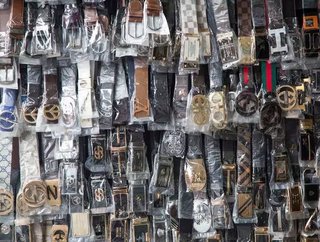Breaking counterfeit: Validating supply chains using blockchain

It’s an unfortunate truth, but we’ve all inadvertently purchased a counterfeit product at one point in our lives. The modern consumer market is saturated with them. In recent years, counterfeit manufacturers have entered big-name online retailers looking to make a profit from reproducing, and then selling, knock-off versions of our favorite brands.
And, unbeknownst to us, we buy them, often at a premium, with little to no way of verifying their authenticity. In fact, counterfeit and pirated products are projected to drain $4.2trn from the global economy, and will put 5.4mn legitimate jobs at risk by 2022, according to the International Chamber of Commerce (ICC).
It’s a problem that most of us recognise, but few fully understand. Imagine purchasing a top-of-the-line product online. You see the picture, as well as the description, but how do you verify that what you receive in the mail is what you intended to purchase? As a consumer, this process can be extremely time-consuming and confusing. And as we enter an age where online retailers are increasingly the platform of choice for most buyers, many do not want to waste time validating their product.
In searching for practical solutions, blockchain technology, which has gained international notoriety for being the mechanism behind cryptocurrencies like bitcoin, may hold the key to ensuring confidence in an increasingly uncertain consumer system. Blockchain provides users with a decentralised ledger that can store an entire history of transactions across a shared database. This record can be accessed and verified from virtually any location in the world, making the authentication of counterfeit goods a seamless process — whether you’re located in the United States or in Singapore.
For distributors, this technology holds tremendous potential for highlighting transparency across multiple vendors. In today’s globalised market, a single product often uses parts that come from different sources, which can be difficult to coordinate. As a result, even the most ethical company can fall victim to incorporating counterfeit goods in their final product. However, with blockchain, companies can store all of this information on one, secure record. Every time a product changes hands, the transaction is stored on the blockchain. Every time a product is transferred to another location, that information is recorded.
For consumers, having access to this kind of data has the potential to completely transform their understanding of a product before they purchase it, serving as the first line of defense against counterfeit schemes. Before blockchain, much of this vetting responsibility was delegated to the retailer. Now, the policing power has been placed into the hands of the person that matters most: the buyer.
SEE ALSO:
-
Industry consortium successfully tests "revolutionary" Accenture blockchain solution
-
DHL and Accenture working on blockchain-based pharma supply chain project
-
Carrefour implements blockchain as part of supply chain transformation
And while large-scale retailers try their best to verify the integrity of the products they sell, many let fraudulent practices slip through the cracks. Amazon was recently implicated in selling a counterfeit version of popular headphone accessory “The Anchor.” The phony product, according to a statement by Anchor founder and creator Casey Hopkins, was reverse engineered to look exactly like the original but with lower quality products.
Amazon has since responded to Hopkins, stating that while the company invests heavily into dedicated teams of software engineers that continuously refine their anti-counterfeiting program, some of the onus falls on the consumer to recognise when a product is a counterfeit. If this is truly the case, how are smaller-scale companies expected to protect the integrity of their products against counterfeiters who are are experts at deceiving the general public?
Companies using blockchain are already working to address this problem, providing heightened security for both the manufacturers selling their products and the consumers buying them. Here at Sweetbridge, we are working to create an accounting protocol that aims to be one of the first tools to increase supply chain transparency on the blockchain. Using this technology, organisations will be able to better understand the financial strength of the vendors they interact with, and consumers will be able to better understand the origin of the products before they buy them. It’s a win-win scenario.
While blockchain’s use-cases are certainly promising, conquering the counterfeit epidemic won’t happen overnight. Seizures of counterfeit items by the U.S. Customs and Border Protection continue to rise year after year, with more than 31,000 seizures occurring in 2016 alone — representing roughly $1.38bn in value. When one faulty product is discovered, it seems that two more arise.
To truly effect change, members of the supply chain, from big-budget online retailers to local manufacturers, must work together to demand greater accountability from the systems that keep their businesses afloat. Using blockchain, this can be a reality. And, sooner than you might expect, customers and manufacturers alike will be able to ensure that what arrives on your doorstep is exactly what you intended it to be.
- Alberto Medina, Founder of Telescope at P&SC LIVE SingaporeDigital Supply Chain
- Why blockchain is vital to managing risk in the supply chainSupply Chain Risk Management
- Blockchain strengthening links in supply chainLogistics
- Ten benefits blockchain brings to supply chainsDigital Supply Chain






